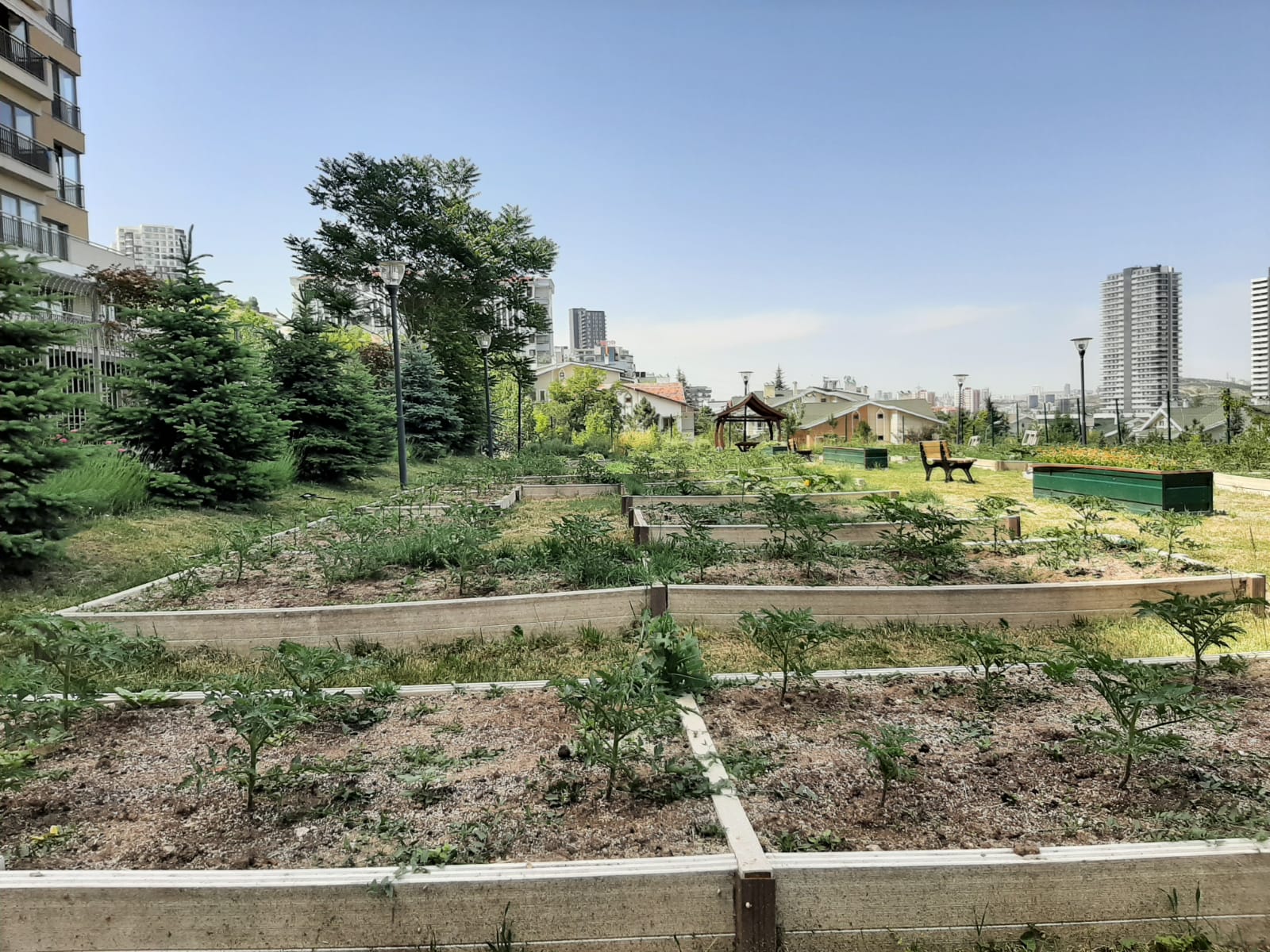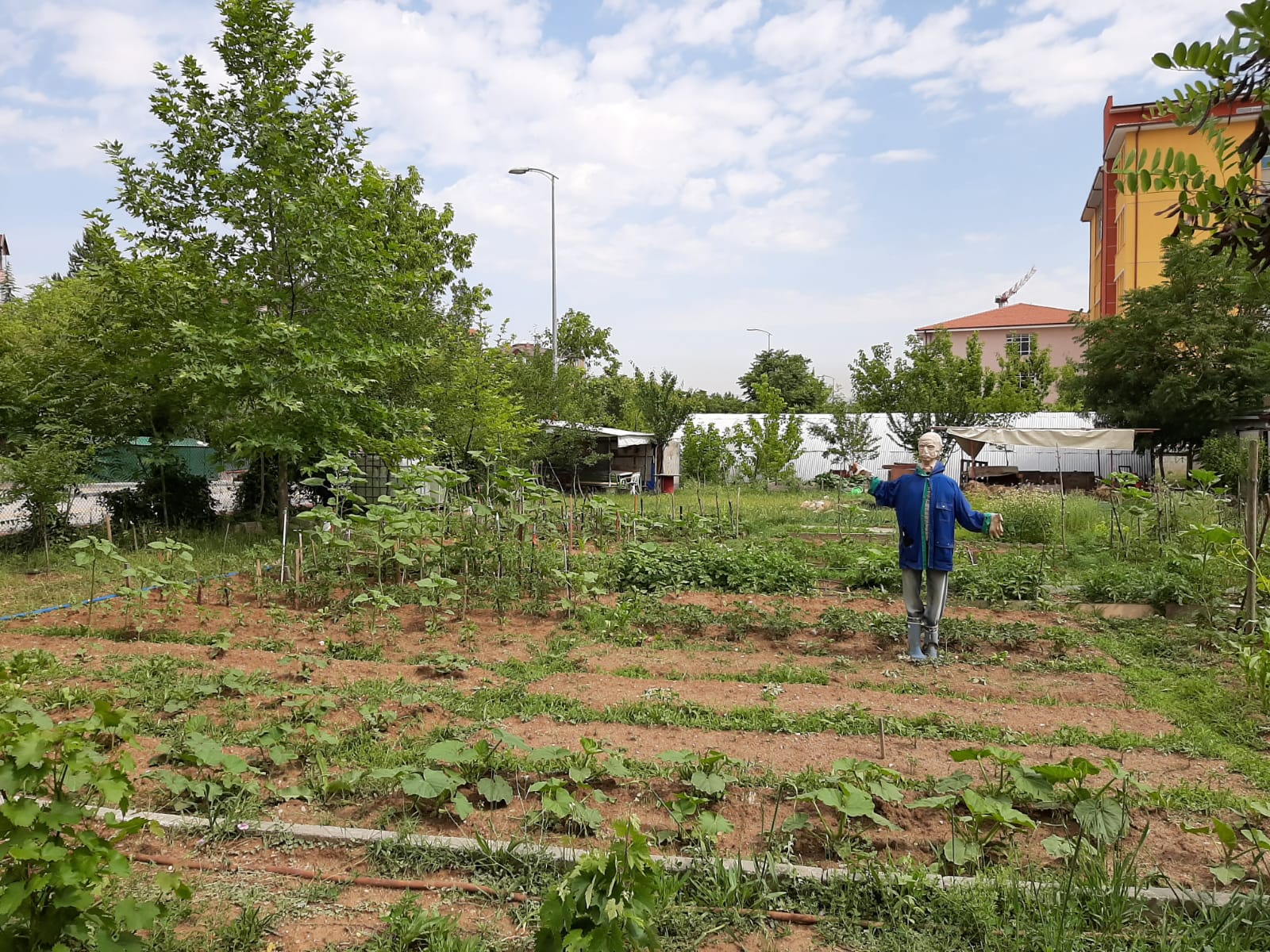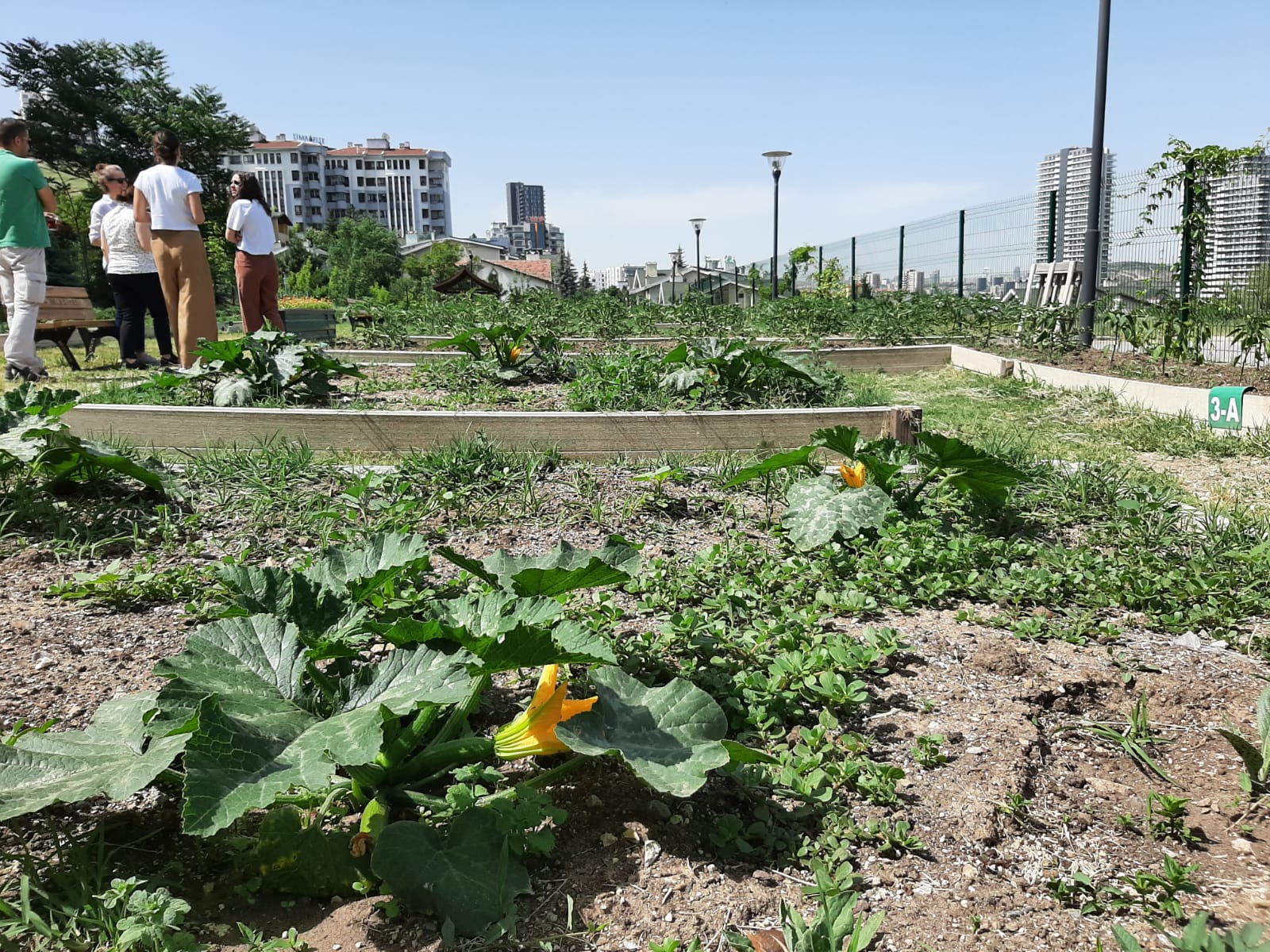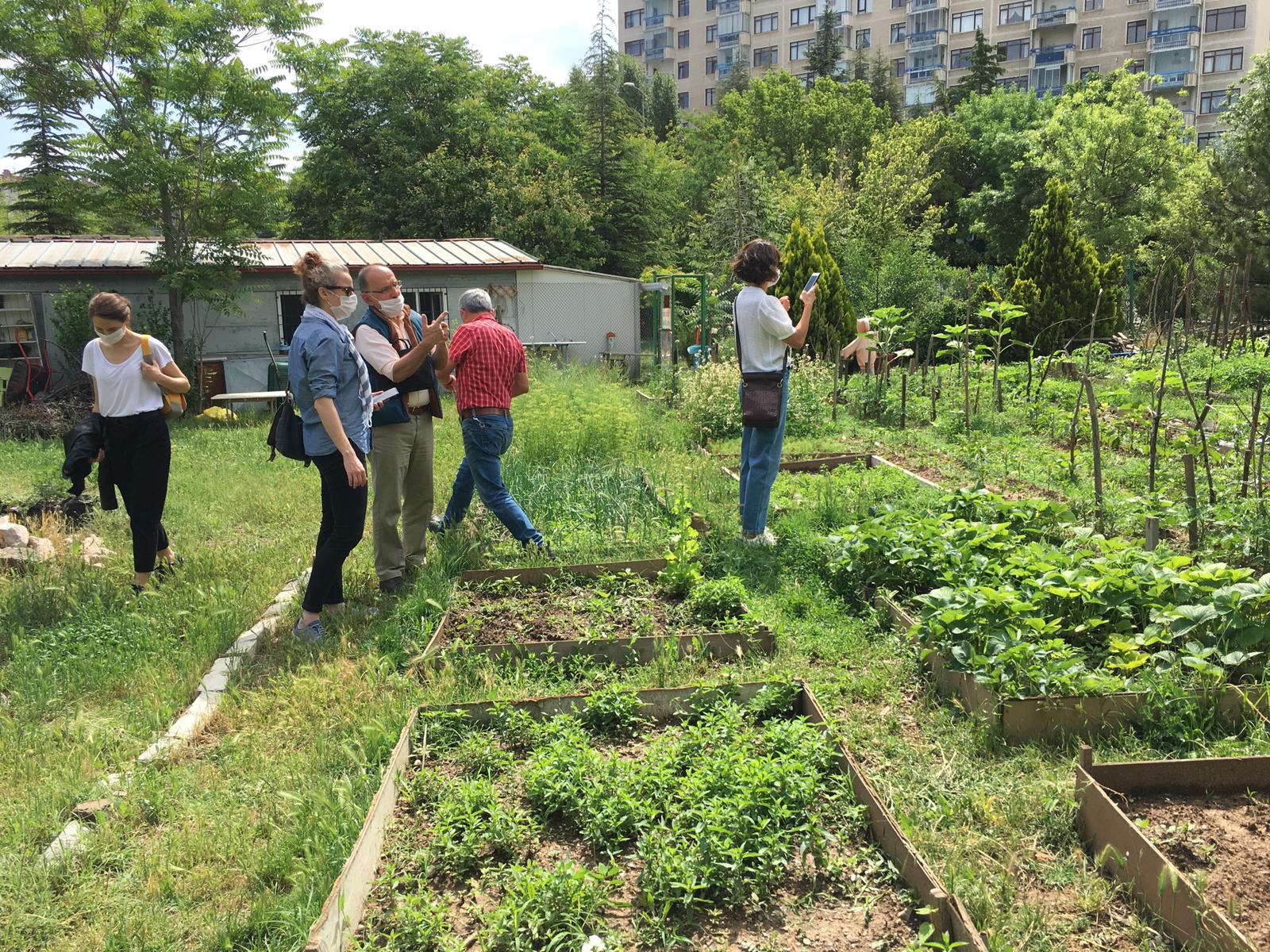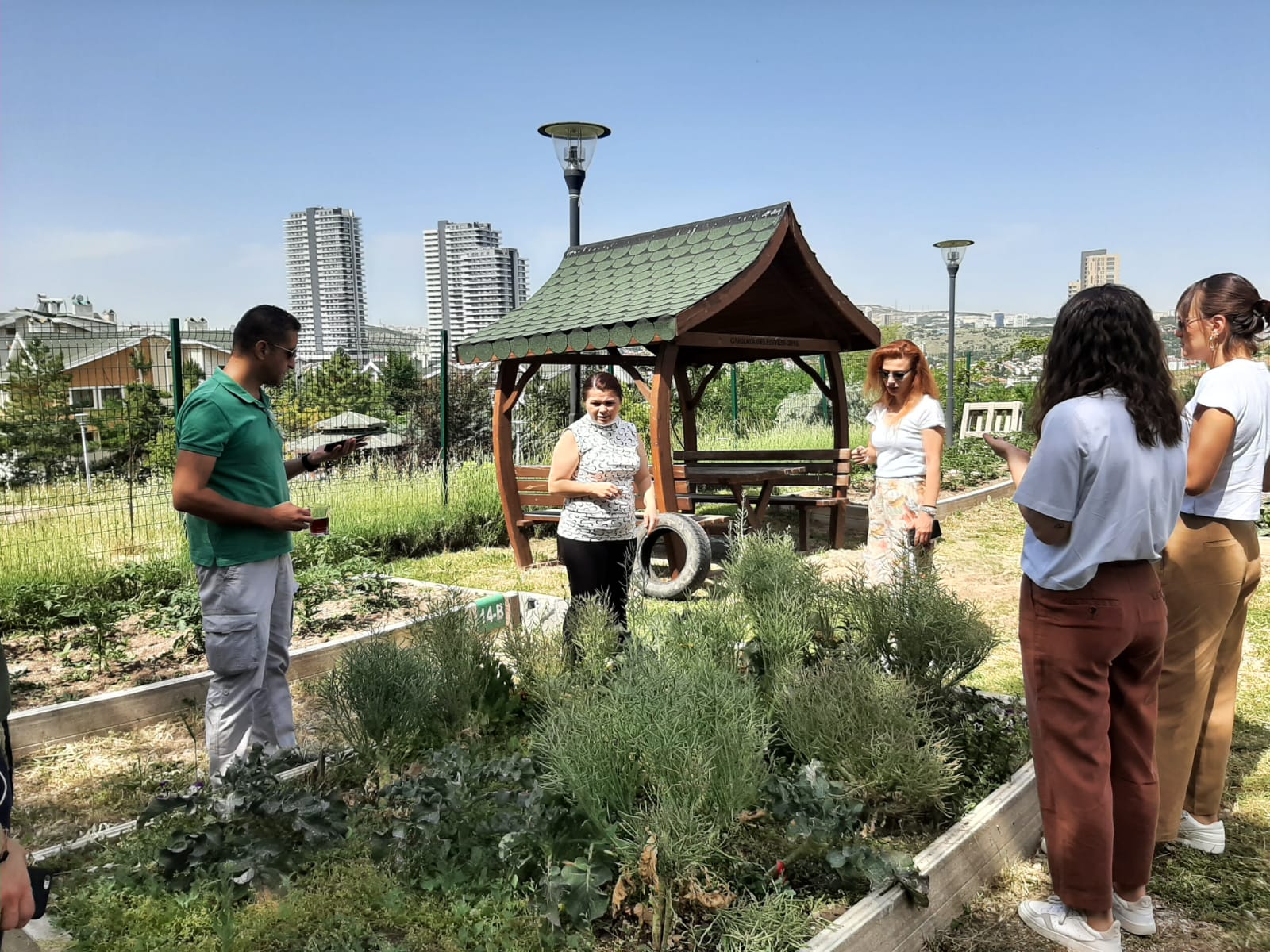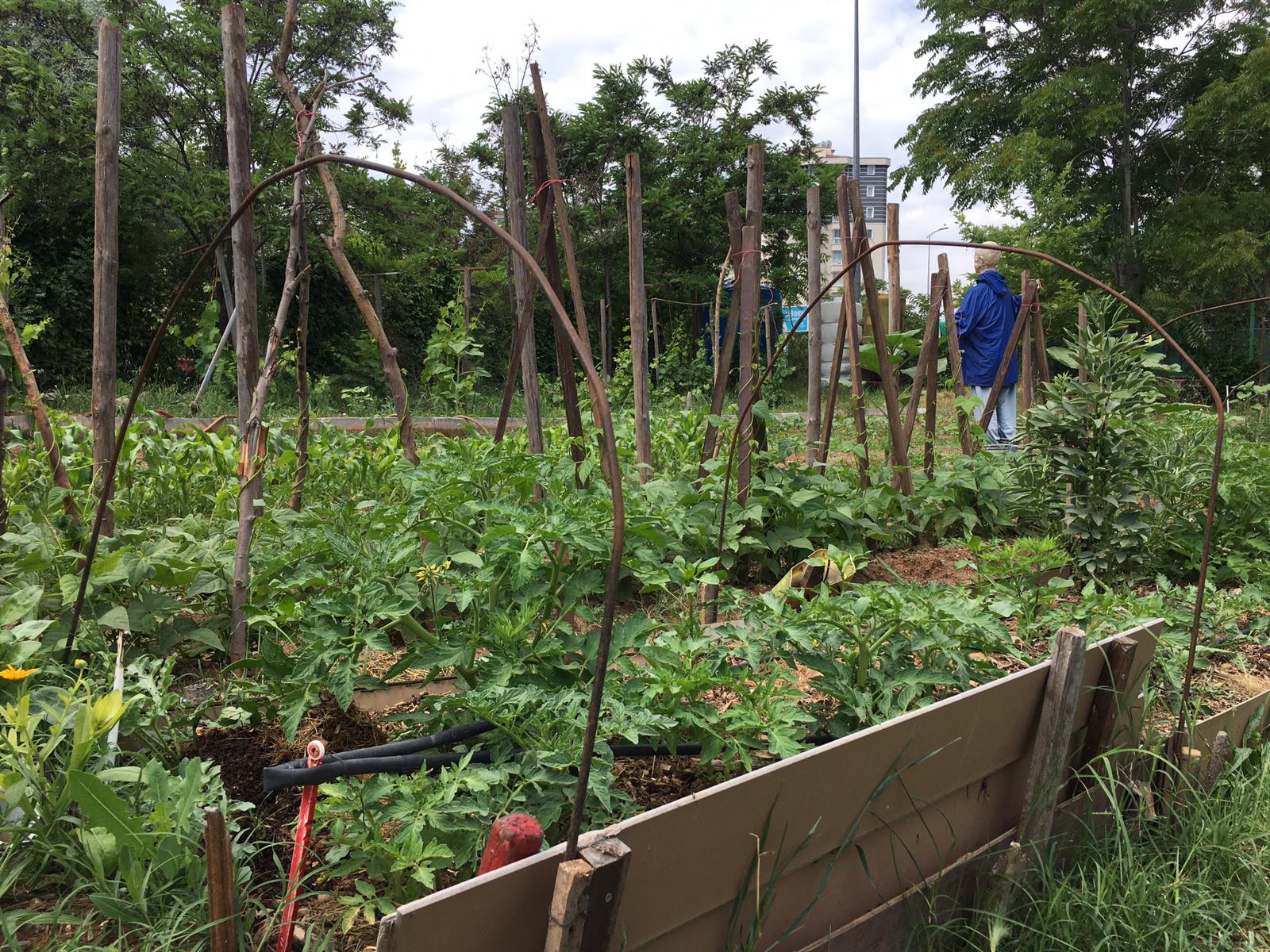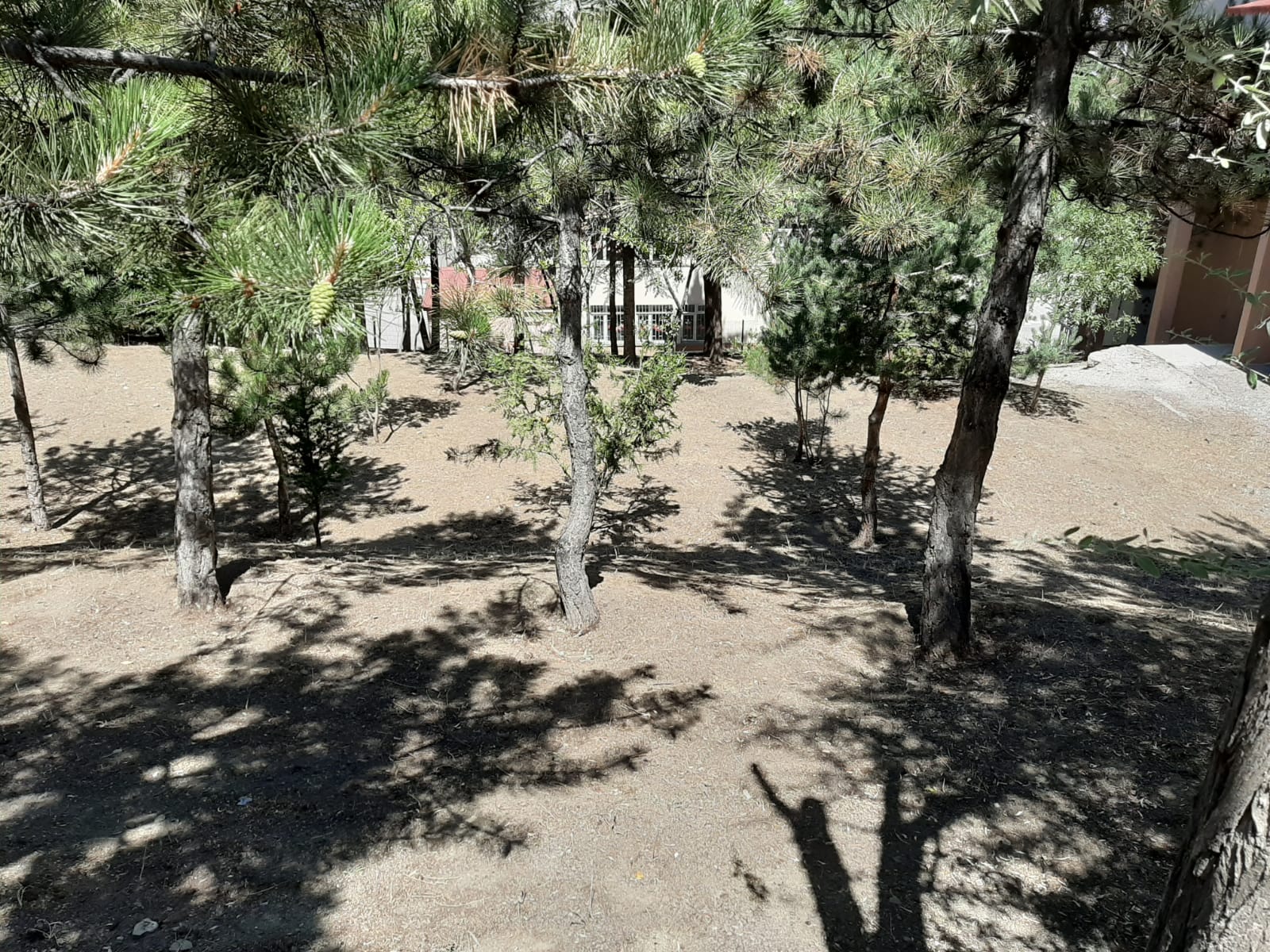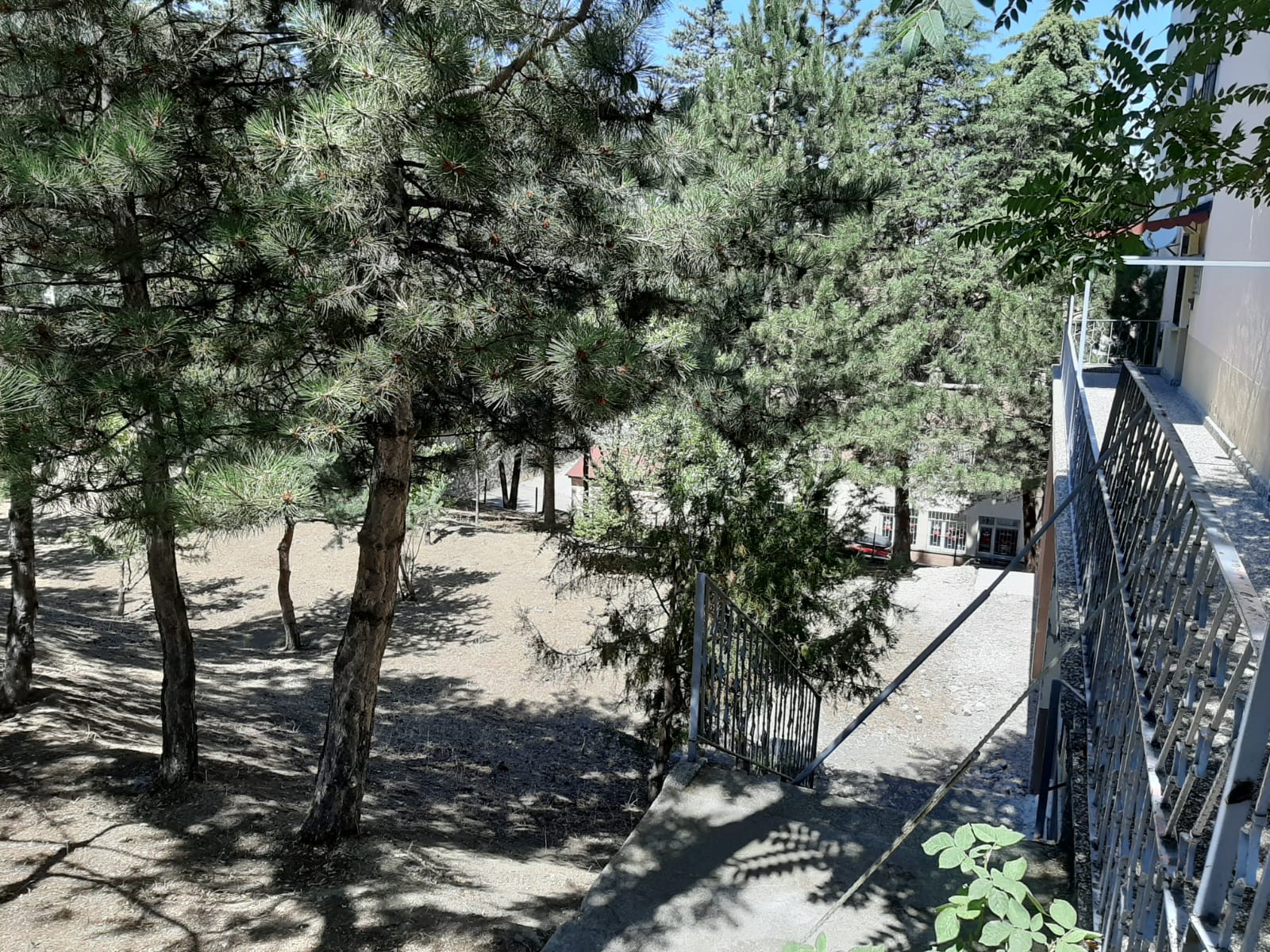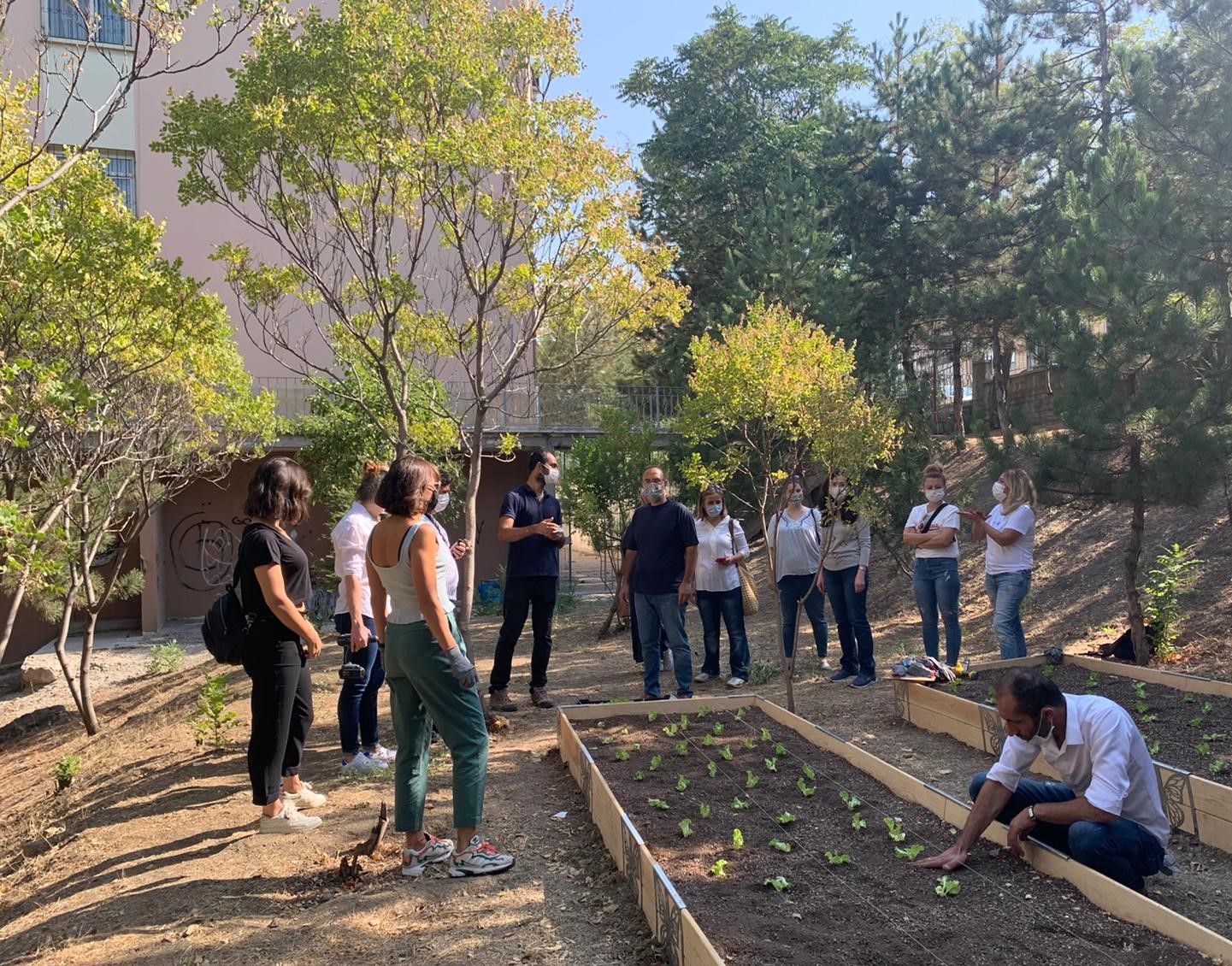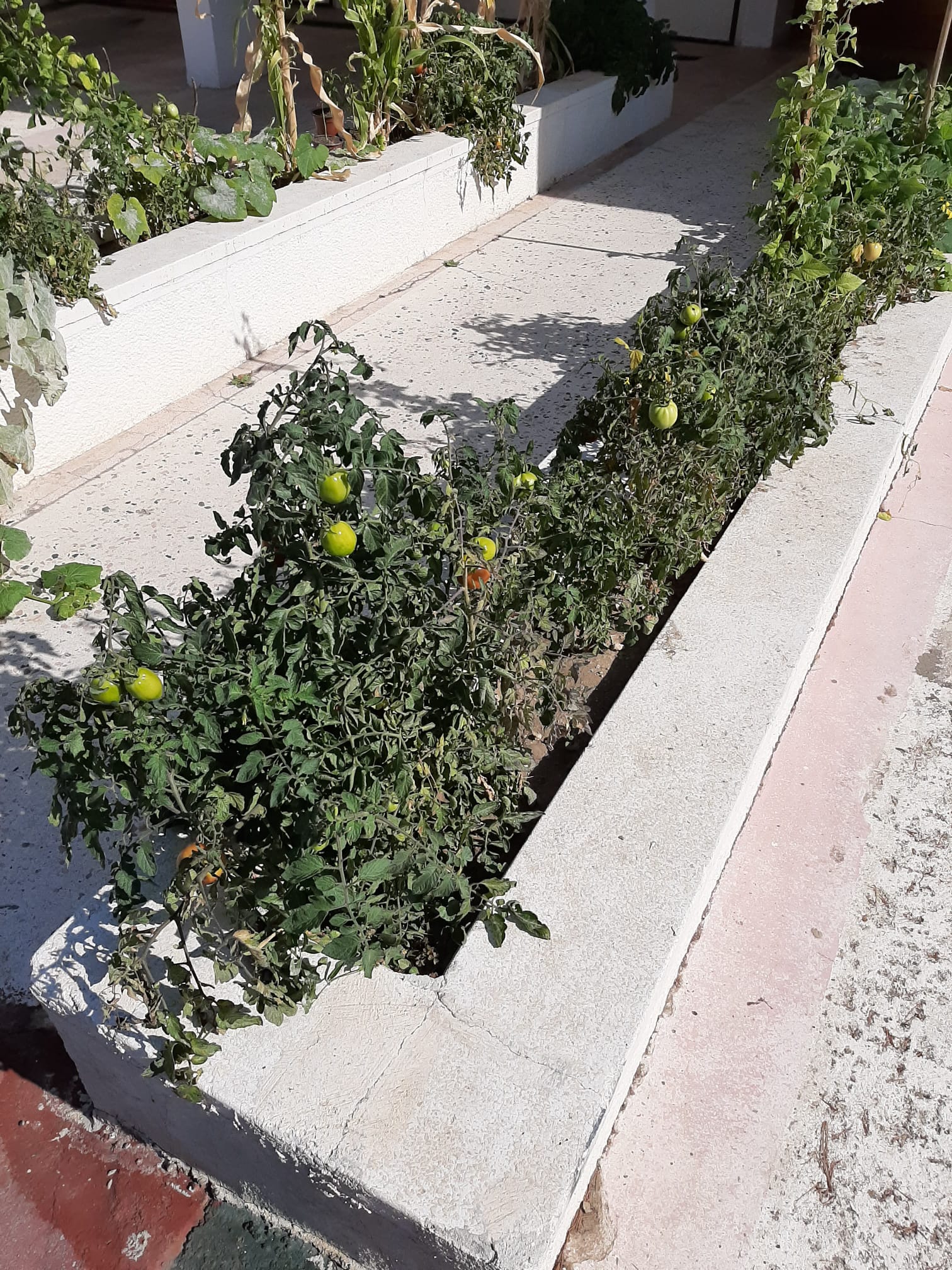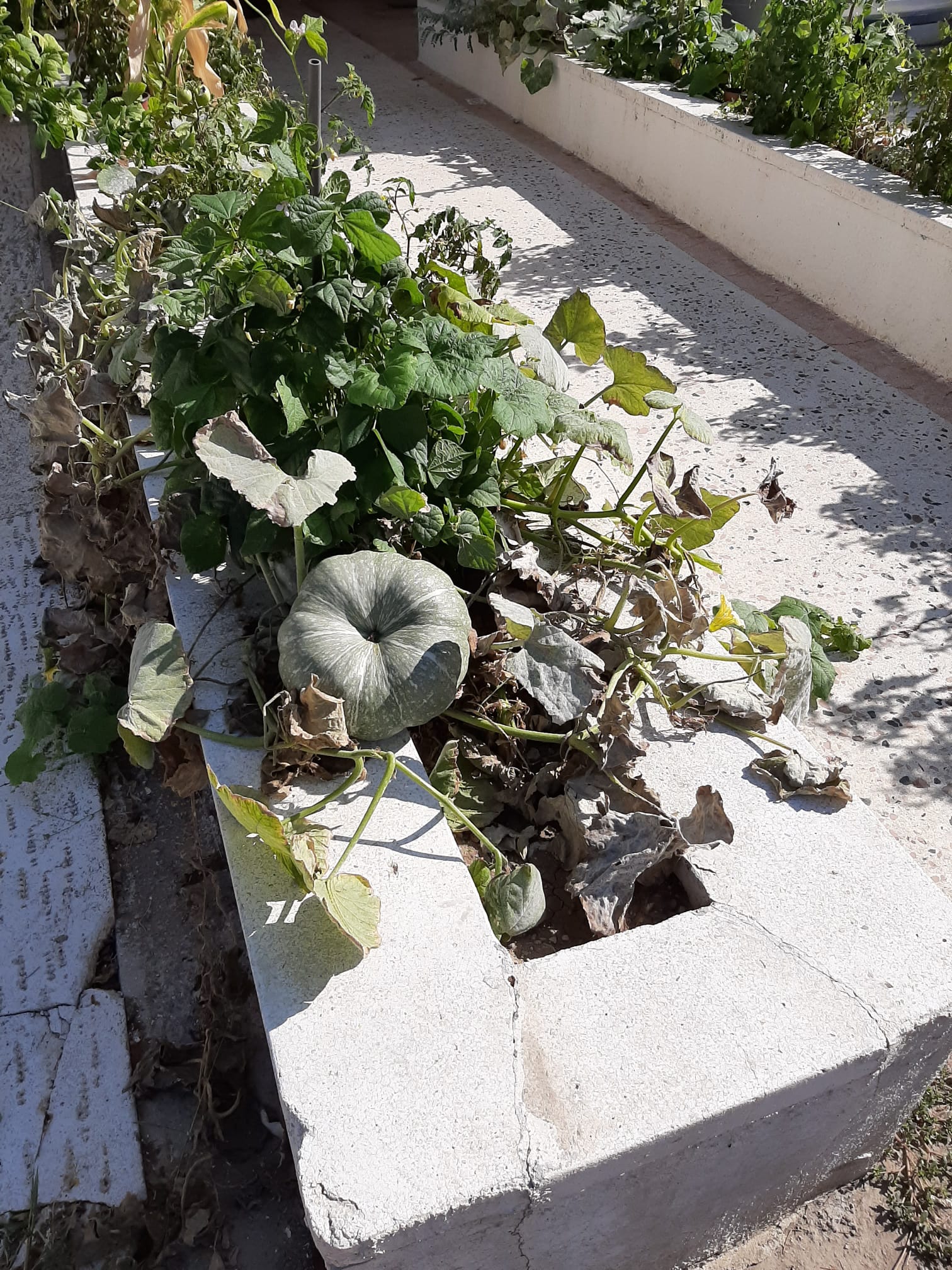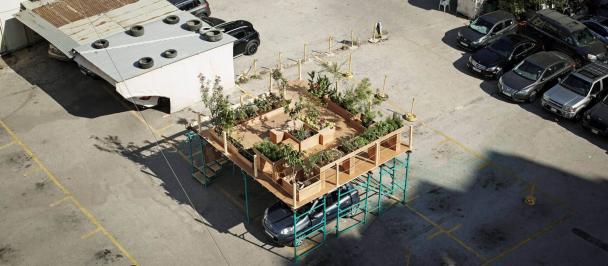The COVID-19 pandemic, as most people would agree, has closed many doors but opened others in terms of opportunity identification. One area that we have been exploring since last year is food security – something that we had not really pondered on prior to the crisis. As part of our usual methodology, we began to explore this space by asking basic questions like: Where does food come from? Who grows it? How complex is food production in Turkey and beyond? What opportunities exist to improve the conditions for producers as well as consumers? What drives people to grow their own food? During this initial phase we reached out to experts, farmers, academics, CSOs and CBOs to understand what the food system looked like. We also visited two small-scale urban gardens in Ankara and a bigger one in Istanbul. Through these visits and discussions, we learned about existing practices as well as challenges faced by various stakeholders.
Visual credit: Gokce Tuna & Pelin Kocer
What quickly became obvious is that farmers think they are taken for granted and most people seem to be oblivious to the growing risk of food shortages, which is a real threat in many parts of the world. One does not need to look far to understand how sudden changes in food supply can wreck lives; the food crisis in Lebanon (driven by an economic collapse rather than a natural disaster) was a real eye-opener for those who have been following this tragedy. Suddenly we saw pictures of people growing whatever they could in tiny spaces like balconies and rooftops to feed themselves[1]. This was of course a survival tactic born out of a major economic crisis rather than an act of sustainability conscientiousness in good times.
Luckily, in most parts of the world food is still affordable and abundant despite large losses[2] during the process of production, logistics and sales. Turkey, with a rich history of agriculture, has been mostly self-sufficient; it is also a major food exporter to regions like the European Union. Despite these relative strengths it is not all roses. Industrial farming that relies on harmful pesticides is still prevalent in many parts of the country. Even peasant farmers who do small-scale agriculture sometimes resort to methods that do not always respect sustainability principles.
Food is affordable for most people thanks to high levels of supply but there is strong evidence of a decline in agricultural output due to lack of incentives and deterioration in socio-economic conditions of farmers. What was once seen as a profitable inter-generational family business is no longer an attractive option especially for young people. Many of them, encouraged by their farmer parents, pursue higher education to break the cycle and earn a living in sectors that value human effort much more than labour-intensive farming.
Interestingly, there are also signs of an emerging trend in the opposite direction. New generation farmers (with little or no history of farming) have been setting up businesses like Elibelinde Tarım, Tarlamvar, and Ek Biç Ye İç that offer not just good economic opportunities but also fulfilling careers for the entrepreneurs most of whom left the ‘day prison’ at work for a healthier life. However interesting these new initiatives may sound their total output is still a drop in the ocean. Either they will significantly grow in numbers and every neighbourhood/town will have its own local food sources (which is sadly a very unlikely scenario) or large-scale farming will have to continue to feed 80+ million people in the country. Although we know that there are more sustainable alternatives like urban gardens, most experts whom we spoke to argue that large-scale farming must continue. They even label small-scale production models a ‘distraction’ from what really needs to be achieved, i.e. retaining farmers and improving food production with investment, incentives, and other support mechanisms.
As reasonable people, we do not disagree with the need for providing more support to existing farmers who can feed large populations at a reasonable cost per household. But we also recognize that the current linear food system (that is based on efficiency and relies on intensification) is not a sustainable solution. What we need is a circular food system that revolves around sustainability and produces healthy food using natural and regenerative practices and as locally as possible. Closing this gap is no doubt an enormous task but one that is achievable. A good starting point is to test alternative models (and make at least one of them work!), especially in areas that are perceived to be unsuitable for new applications.
As a curious innovation unit, we are not at all convinced that urban farming is such a bad idea given that over 65% of the global population are expected to live in cities by 2050. We need to find ways to bring some of the food production to cities; urban gardens offer a sustainable solution. We decided to test a particular version of an urban garden where an existing but unused space (e.g. in a public park) can be repurposed. After a consultation with a local municipality, we realized that finding a suitable site (and a partner) was going to be a challenge. They were understandably concerned that allocating even the smallest area in a less-than-visible public park was going to attract complaints from locals who would be disturbed by what she called “wayward guerrilla gardeners”.
Based on that feedback we decided to find an alternative location to carry out an experiment. One morning I spotted the perfect opportunity; the school opposite my home, in one of the most densely populated areas of the city (see below), had quite a large footprint which included a neglected garden populated by evergreen trees. It was not the sunniest spot, was home to a bunch of stray cats (which can cause destruction to gardens), and we had no idea what the soil quality was like; but it was worth a try.
Visual credit: Google Earth
Visual credit: Gokce Tuna
Following fruitful discussions with the school administration and the private foundation that built the school some decades ago, we were given the green light to set up a small urban garden for the use of the school community. And in the process, we formed new partnerships with these two ‘unusual actors’ – what is not to like!
In addition to a suitable site we needed expertise, so we hired a local consultant who had already set up an urban garden (for a university club) some years back. We bought supplies and agreed with the school that we would have a ‘planting date’. A bunch of enthusiastic teachers turned up on the day and our extended team was there too. After several hours of hard work, we finally saw the fruits of our labour:
Visual credit: Pinar Engin
Despite the disruption caused by the pandemic, the urban garden has begun to flourish – though we are yet to see kids run around and explore the garden. The first crops (salad leaves & herbs) were harvested back in winter, we are now going test others. You can read about our full experiment here.
A few points to take away from our initial experience:
1. Compared to public parks, it is much easier to turn unused/neglected spaces within the boundaries of places like schools or privately-owned property into urban gardens. Local authorities generally want to see successful stories before they think about trying it themselves. A certain degree of risk aversion is understandable given the pressures they are under. To circumvent this challenge, it is wise to test unproven ideas in areas that are not considered risky and present them as a model to convince others to follow suit.
2. For an urban garden to function well there needs to be a dedicated group of people, ideally a close-knit community, who look after it. Experts are there to guide and support, but the actual running of the space must be handled by the locals who will create a sense of ownership, responsibility, and pride. That is the only way to secure its health and longevity.
3. Don’t listen to people who say: “you cannot grow stuff in a harsh climate”. It does not take much to protect an urban garden from the elements. The urban density is on your side, use it well.
4. Also, don’t listen to people who say: “you need at least x amount of space to grow vegetables and fruit”. People are creative when it comes to growing their own food. I was amazed when I saw how much produce my neighbour got from these two tiny planters:
Visual credit: Gokce Tuna
5. There is nothing wrong with guerrilla gardens. In fact, they are super cool! Read more about them here and see for yourself.
We hope our results will encourage municipalities and local groups to take action in this area–even a small patch of soil can be turned into an urban garden by an enthusiastic community. Local production of healthy nutritious food without pesticides gets us one step closer to a sustainable food system. Countless studies have also shown that it is also associated with better health and environmental outcomes[3].
[1] https://www.nytimes.com/2020/09/05/world/middleeast/lebanon-economic-crisis-farming.html
[2] FAO estimates that around 1/3 of food is lost or wasted globally which amounts to about 1.3 billion tonnes per year.
[3] https://journals.plos.org/plosone/article?id=10.1371/journal.pone.0243949

 Locations
Locations
